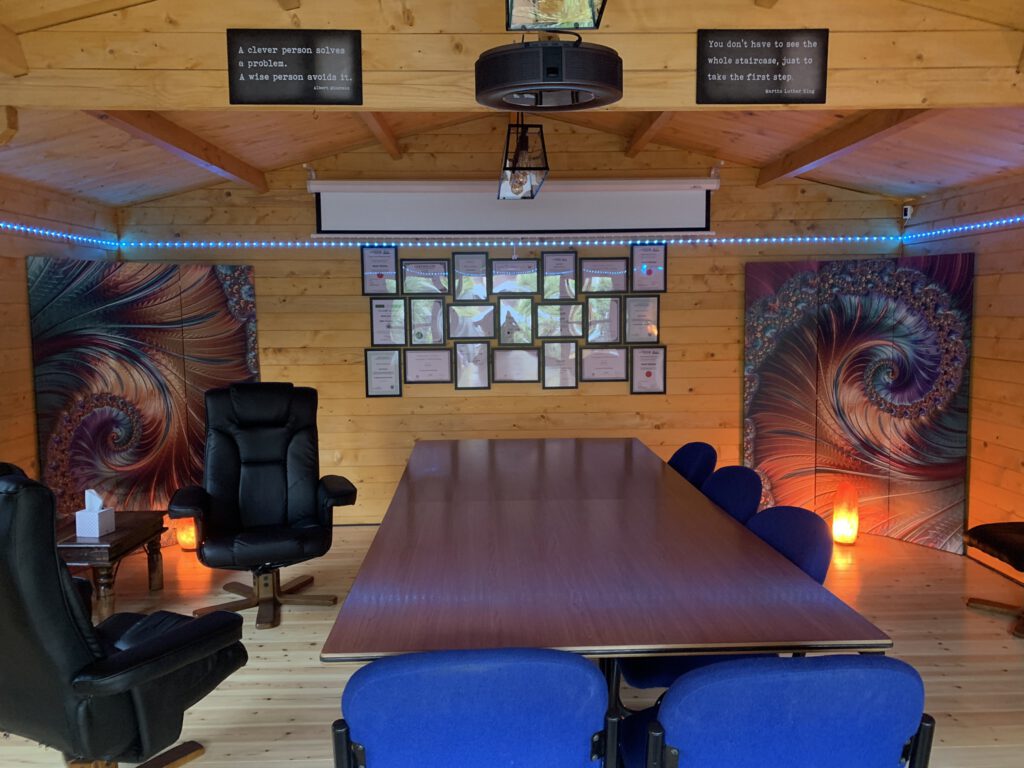The Rewind Technique
The Rewind Technique is mainly used for PTSD and phobias, but can also be useful for other things such as addiction, OCD and more.
The Rewind Technique is mainly used for PTSD and phobias, but can also be useful for other things such as addiction, OCD and more.
For many years people with trauma or phobias have been treated using approaches which drag them back through the experience again, which can be a highly unpleasant thing to do in some severe cases such as abuse, or something horrific, even some bad phobias.
This does not happen with The Rewind Technique, and I don’t even have to know the details of what happened to you if you feel you can’t talk about it. In fact with such cases I prefer you not to relive it, as it can embed the memory deeper. We use code words like “The kitchen memory” or whatever your memory relates too.
This is why so called “critical incident debriefing” where people are actually encouraged to “talk it out” can itself be a disaster for the 25% of people who remain deeply traumatised after an event.


If a traumatised person is debriefed in a state of high emotion, the process can increase the arousal to the point of overload, trapping the sensory impressions in the amygdala.
Getting people to relive a trauma is NOT therapy. If reliving a trauma could heal PTSD, the first real flashback would do the trick!!
So how are memories made? Normally memories are laid down as immediate impressions in the brain, then organised by the hippocampus, and then stored into the neocortex in “long term memory”. This process makes the event a narrative memory, something that feels past, in the right time, and something we can talk about. When trauma happens the process gets blocked and the memory doesn’t get turned to narrative. Just imagine how awful it would be to remember all your worst memories as if they were current and happening now “live”, even if they happened years ago.
PTSD sufferers have this. The memory doesn’t fade like it should. It feels like yesterday and sometimes hard to talk about.
During a traumatic event a persons emotional response can be so extreme that the memory becomes encoded in the “fight or flight” part of the brain, the amygdala, instead of the hippocampus. It stays locked in this part of the brain as a survival pattern, ready to use again if a similar emergency happens. Our brain is very good at learning and making pattern matches – but sometimes these pattern matches are wrong, creating flashbacks or phobias!


The Rewind Technique keeps you calm using hypnosis, uses disassociation so it removes you from the emotion so you stay calm and relaxed, and it allows the memory to be reprocessed safely, so it can be moved from the “now-focused” fight or flight amygdala to the neocortex, where it will be tagged as a past and no longer threatening event.
I’ve used this technique on many different situations, including a clown phobia, for grief when someone felt like it was very recent that they lost their nanna but it was actually 15 years ago, driving phobia, a bridge phobia, a water phobia (jacuzzi, pool and sea), someone who’s dad died 14 years ago and never really got over it, a person with trauma over a neighbour stealing land, a child with misophonia (kids version) and many more situations.
The Rewind Technique lessens the pain and emotions around the event so they can move on with life, or reducing, or completely ridding the phobia/PTSD all in one session.